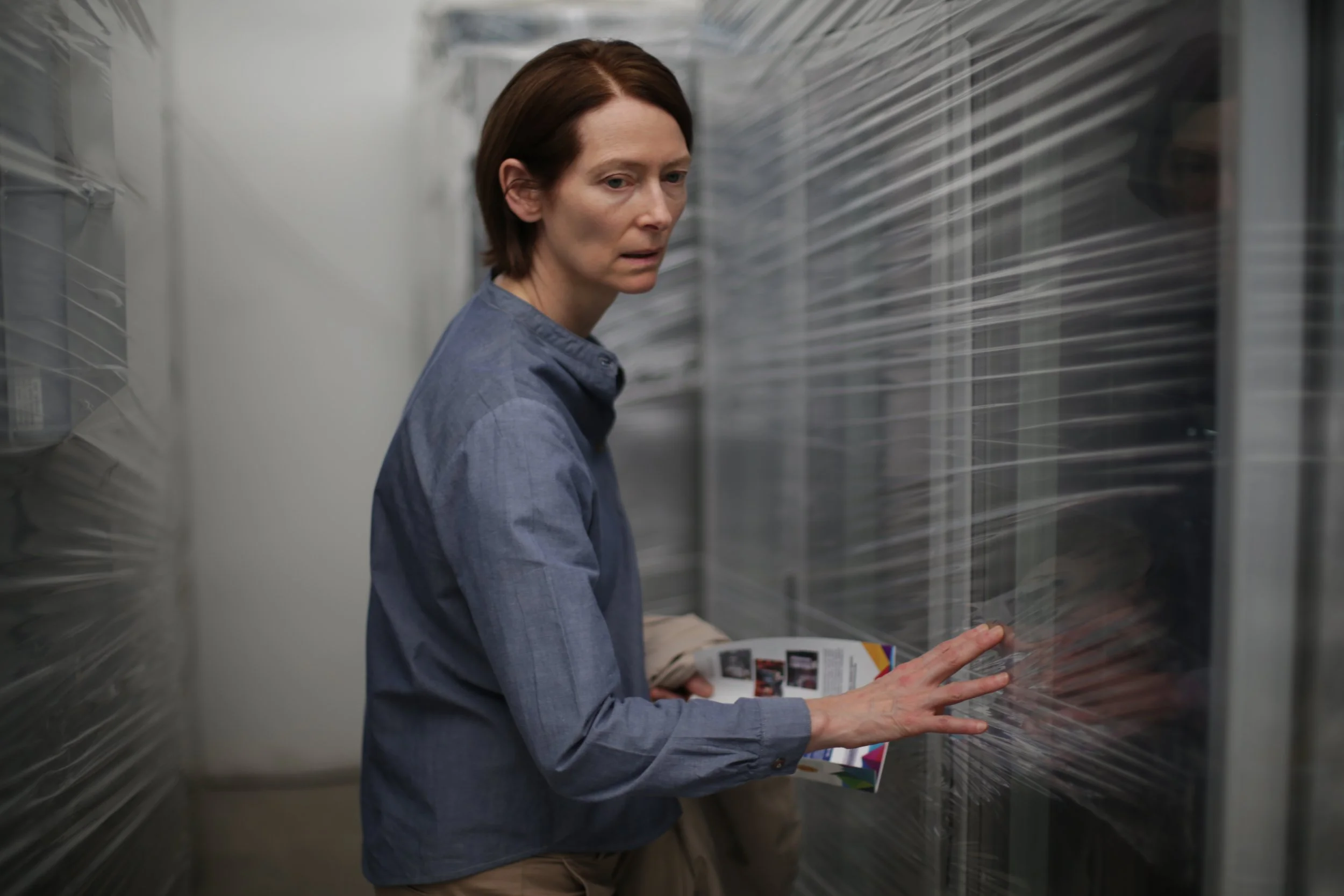Transcendence and Mystery
A Review of the Film Memoria, Written and Directed by Apichatpong Weerasethakul
By Larry Smith and Rustle Frost
English and Spanish, with English Subtitles
Written & Directed by
Apichatpong Weerasethakul
2021, Neon
2 hours, 16 minutes
While studying surrealism with the late J. H. Matthews, a professor of film and literature at Syracuse University, I (Larry) watched a documentary on filmmaker Hans Richter entitled Hans Richter: Give Chance a Chance (1973), which had much to teach me about experimental film. Fascinated as I was with Richter’s bold life and surreal images, I was also struck by how badly his films were shot and edited. “I could do better than that,” I boasted to a colleague. Only further into the course did I realize that I had missed the full intention and impact of the art of the film to jar us awake. A slave to Hollywood filmmaking, I needed new eyes to begin to see the film. This boxed-in vision may explain the new film Memoria’s narrow popularity despite wide critical acclaim, including the Cannes Jury Prize in 2021.
Like all fine film, Memoria uses cinematic art to fan out from its abstract subject—a startling, subterranean sound seemingly contained only within the main character’s mind—to become something more, something elemental and revelatory of life.
Memoria is an internationally co-produced film set in Colombia, written and directed by Apichatpong Weerasethakul, and starring an international cast that includes Tilda Swinton, Elkin Díaz, Jeanne Balibar, Juan Pablo Urrego and Daniel Giménez Cacho.
Though plot is not central to Memoria, it can be summarized: Tilda Swinton as the lead character finds herself in Colombia, where she alone hears a huge and random booming sound (though the audience can hear it too). It startles and disturbs her day and night, finally driving her to seek help from a sound technician named Hernán, who manages to recreate it, yet not remove it from her life. She next seeks the help of her sister and others in a series of disconnected scenes, ending with her following a stream into a woodsy area, where the film reaches its enigmatic conclusion.
Though not a mystery, Memoria’s core subject is Mystery and our collective sensing, seeking explanation, and ultimate acceptance of it. Noting that his own insomnia helped to guide the film’s creation, Weerasethakul uses the main character’s sleepless state and her search for an explanation (or cure) for this random and resounding sound as the narrative’s basic mode of revelation.
Memoria’s core subject is Mystery and our collective sensing, seeking explanation, and ultimate acceptance of it.
In an interview about the film, Weerasethakul declared that once you know the rules of an art, you can break them—break them or bend them to new forms. Memoria’s open and haunting structure avoids traditional, linear progression, allowing us to wonder how the spaces of the film are linked together. When one grasps and accepts that the plot will not unravel the enigma of this film, one focuses on the sensory images, which include the sharp, jarring bangs and the slow, lengthy waves of natural scenes. Full scenes play out in long, single takes, inviting us into the mind of our lead character. Held silences challenge our perception, asking us to sense some significance more deeply and fully, and allowing the drama to gradually unfold around us. We are forced to reckon with the subsurface layers of personal and communal history and collective memory that form the links between our past, present, and future.
Swinton’s character is often captured in medium to wide shots that emphasize her surroundings, giving equal focus to a street vendor, a flutter of birds or a trailing dog. This reflects her sensory journey of observation, yet her receptive and sensitive acting empowers the film, as does Elkin Diaz as Hernán, the wise fish scaler who shares her vision of being alive in the present. At one point, both of them speak a shared memory, word for word, as in the non-dual Zen coin printed the same on both sides – appropriate for the director’s similarly reflexive philosophy on our modes of perception.
Tilda Swinton in Memoria. Courtesy of Neon.
We spend long minutes exploring sound equipment, recurring construction scenes of an underground tunnel, an archaeological excavation, cars blasting horns in a parking lot, haunting building interiors, and finally a fisherman’s body lying motionless along a mountain stream. This exploration reflects a certain transience, like that of our fisherman’s state midway between life and death. In liminal spaces, Weerasethakul probes into what is beyond the conscious. We experience his protracted silences, encompassing sound design, and expert balance of lustrous natural lighting and expressionistic use of shadow that immerse us as outsiders into the natural beauty of Colombia and the cultural history beneath.
With great purpose, Weerasethakul’s craft joins form and function, forcing participation. In an interview with Joshua Minsoo Kim, published in Tone Glow, Weerasethakul said: “Memoria was quite abstract. We shot a lot, actually, and we cut a lot out of the so-called ‘narrative’ or ‘explanation’ and left a lot up to the audience. I wanted to respect the audience’s freedom and let their own solitude synchronize with Jessica [the main character], with Bogotá, with the clouds.”
Asked of his goals in filmmaking in that same interview, Weerasethakul declared simply, “It’s about synchronization with people and allowing people’s opinions to pass through you. It’s about being more light.”
If you stay open to this film, the dream continues. If boxed in by expectations and past experiences, the film fails—or is it the viewer? What is so remarkable about Memoria is its deep mystery, the inexplicable movement and wonder of each moment.
Note: Filmed in English and Spanish and produced by CNC, the film is currently available for purchase in Blu-ray import from Amazon Prime. It premiered in 2021 and is scheduled for limited theater distribution through NEON as well as for private screening by request. Check appearances at https://www.memoria.film/.
Trailer courtesy of Neon.
Larry Smith is a critic and poetry and fiction writer. His two literary biographies are of Kenneth Patchen and Lawrence Ferlinghetti. He directs Bottom Dog Press in Ohio. He is professor emeritus at Bowling Green State University.
Rustle Frost is a student of film and media at the University of Southern California. He is Smith’s grandson.


